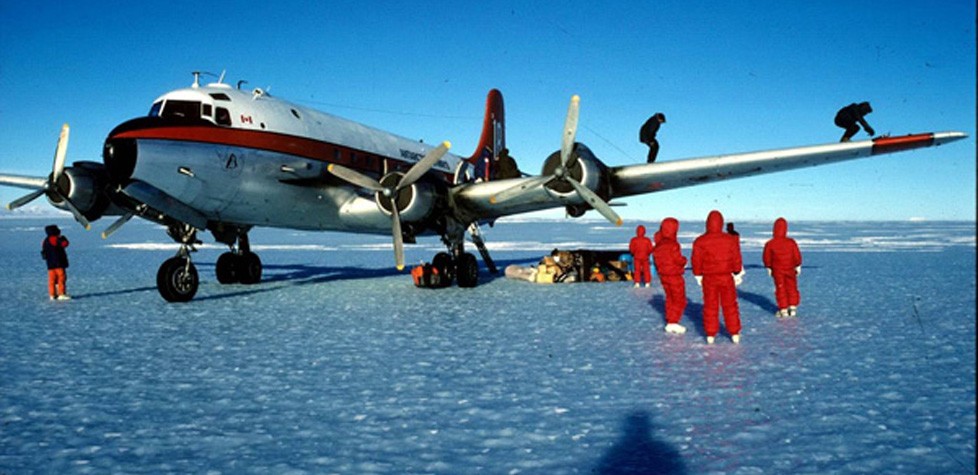Are you dreaming of standing at the Earth’s southernmost point? Can You Travel To South Pole? Absolutely! SIXT.VN provides expert travel guidance to help you explore this extraordinary destination, ensuring a seamless and unforgettable journey. From historical insights to practical tips, discover how you can experience the adventure of a lifetime with our comprehensive travel solutions, including personalized itineraries and reliable support.
1. Understanding the South Pole: More Than Just a Point
When planning a trip to the bottom of the world, it’s essential to understand that the term “South Pole” encompasses several distinct locations. This knowledge will help you clarify your travel goals and appreciate the unique aspects of each pole.
- The Geographic South Pole: This is the point most people envision – the southern axis of Earth’s rotation, located at 90 degrees South latitude.
- The South Magnetic Pole: The point where a compass needle points, influenced by the Earth’s magnetic field, which constantly shifts. According to the National Centers for Environmental Information (NCEI), the magnetic poles move over time, requiring continuous updates to the World Magnetic Model (WMM) for accurate navigation.
- The South Geomagnetic Pole: This pole represents the overall trend of Earth’s magnetic field, extending into space. It affects the location of the Southern Lights (Aurora Australis).
- The Pole of Relative Inaccessibility: The point on the Antarctic ice sheet farthest from any coastline.
2. A Journey Through History: Exploring the South Pole’s Past
The allure of the South Pole has captivated explorers for centuries, driving them to overcome unimaginable challenges.
- Early Exploration Attempts: In the late 1700s and early 1800s, expeditions sought to explore the Southern Ocean, leading to the discovery of Antarctica in 1820.
- The Heroic Age: From the late 1800s to 1922, explorers embarked on ambitious journeys, pushing the boundaries of human endurance. According to the Royal Museums Greenwich, this era saw significant geographical discoveries and scientific research.
- Robert Falcon Scott’s Expedition (1901-1904): Scott’s team ventured deep into Antarctica, discovering the polar plateau but turning back 410 miles from the South Pole.
 Robert Falcon Scott Expedition
Robert Falcon Scott Expedition
Alt text: Captain Robert Falcon Scott’s Discovery expedition ship in Antarctica
- Ernest Shackleton’s Attempt (1907-1909): Shackleton pioneered a route through the Transantarctic Mountains but was forced to turn back just 97 miles from the Pole due to dwindling supplies.
- The Race to the South Pole (1910-1912): Roald Amundsen’s Norwegian team achieved the milestone of reaching the South Pole first on December 14, 1911.
- Scott’s Tragic Journey: Scott’s team reached the South Pole on January 17, 1912, only to find Amundsen’s flag already planted. They perished on their return journey.
- Later Expeditions: Douglas Mawson explored the Antarctic coastline south of Australia (1911-14), and Nobu Shirase led the first non-European Antarctic expedition.
- Modern Era: The International Geophysical Year (1957-58) sparked a period of intense Antarctic exploration and research, leading to the establishment of research stations like the Amundsen-Scott South Pole Station.
3. Reaching the South Pole Today: How is it Possible?
While the South Pole was once accessible only to intrepid explorers, modern transportation and logistics have opened it to a broader audience.
- Commercial South Pole Travel: Since the 1980s, commercial ventures have made it possible for tourists and adventurers to visit the South Pole.
- Adventure Network International (ANI): ANI pioneered non-governmental expeditions to the South Pole, enabling access to landmarks like Mount Vinson and the Geographic South Pole.
- Antarctic Logistics & Expeditions (ALE): ALE acquired ANI and continues to offer various options for South Pole travel, from adventurous vacations to challenging expeditions.
4. Flying to the South Pole: A Quick and Comfortable Option
For those seeking a swift and relatively comfortable journey, flying to the South Pole is an excellent choice.
- Flights to Union Glacier: The journey typically begins with an intercontinental flight to Union Glacier, ALE’s base camp.
- Day Trips: A day trip to the South Pole offers a thrilling experience, allowing visitors to explore the area and return to Union Glacier for a comfortable overnight stay. According to Antarctic Logistics & Expeditions (ALE), the flight from Union Glacier to the South Pole takes approximately 4 to 5.5 hours.
- Overnight Stays: For a more immersive experience, consider an overnight stay at ALE’s South Pole Field Camp, featuring Arctic Oven Tents with comfortable amenities.
- South Pole Camp: Located close to the Geographic South Pole marker, the Ceremonial Pole, and the Amundsen-Scott South Pole Station.
5. Skiing to the South Pole: An Epic Adventure
For those who crave a more challenging and immersive experience, skiing to the South Pole offers a unique opportunity to connect with the spirit of early explorers.
- Ski Expeditions: ALE offers ski expeditions to the South Pole, ranging from two weeks to the full Antarctic season.
- Requirements: Participants should be experienced in skiing and winter outdoor activities and commit to a rigorous pre-trip training program.
- Ski the Last Degree: This option involves skiing the last 60 nautical miles (69 mi/111km) from the 89°S line of latitude to the Geographic South Pole, pulling gear on a sled (pulk).
- Longer Expeditions: Offering the ultimate physical and mental challenge, with various route options available.
 Skiing to the South Pole
Skiing to the South Pole
Alt text: Extreme expeditionists Skiing to the South Pole
6. Essential Travel Tips for Visiting the South Pole
Planning a trip to the South Pole requires careful consideration of the unique conditions and logistics. SIXT.VN offers expert guidance to ensure a safe and enjoyable experience.
- Book in Advance: Due to limited availability and high demand, it’s crucial to book your South Pole adventure well in advance. SIXT.VN can assist with securing your spot and managing all necessary arrangements.
- Pack Appropriately: Extreme cold is a constant factor at the South Pole. Pack layers of warm, waterproof clothing, including thermal underwear, insulated jackets, gloves, hats, and sturdy boots.
- Physical Fitness: Whether you’re flying or skiing, good physical fitness is essential. Engage in regular exercise and consult your doctor before embarking on your trip.
- Acclimatization: The high altitude of the South Pole (approximately 9,300 feet or 2,835 meters) can affect some individuals. Allow time to acclimatize to the altitude, stay hydrated, and avoid strenuous activities upon arrival.
- Travel Insurance: Comprehensive travel insurance is a must. Ensure your policy covers medical emergencies, evacuation, and trip cancellations.
- Respect the Environment: Antarctica is a pristine and fragile environment. Follow all guidelines to minimize your impact, including not littering, avoiding disturbing wildlife, and staying within designated areas.
7. Why Travel to the South Pole with SIXT.VN?
Planning a trip to the South Pole can be overwhelming, but SIXT.VN simplifies the process with our comprehensive travel services.
- Expert Guidance: Our experienced travel consultants provide personalized advice and support, helping you choose the best travel options for your interests and budget.
- Custom Itineraries: We create customized itineraries tailored to your specific needs, ensuring a seamless and unforgettable experience.
- Reliable Support: From booking flights and accommodations to arranging transfers and activities, SIXT.VN handles all the details, allowing you to relax and enjoy your adventure.
- 24/7 Assistance: Our dedicated support team is available 24/7 to assist you with any questions or concerns that may arise during your trip.
8. South Pole Travel: FAQs
8.1 How do I get to the South Pole?
Depending on the type of adventure you’re looking for, ALE offers flight and ski options to travel to the South Pole.
8.2 What will I see at the South Pole?
When Amundsen and Scott arrived at the South Pole, it was an empty expanse of ice, stretching northwards in all directions. These days, the South Pole is a crossroads for science, history and adventure. The area around the Pole is an Antarctic Specially Managed Area. It is home to Amundsen-Scott South Pole Station, a large US base comprised of a central, elevated station, outlying science labs and facilities, and a skiway. The Geographic South Pole is located close to the station, with a decorative survey marker and a sign commemorating the achievements of Amundsen and Scott. Not far away lies the Ceremonial Pole, a striped pole with a reflective ball on top, surrounded by the flags of the original signatories to the Antarctic Treaty. Like much of Antarctica, the South Pole is covered by glacial ice, many thousands of feet thick. The ice is gradually flowing toward the coast and moves at a rate of approximately 33 feet (10m) per year. Because of this, over the course of the year, the pole marker gradually moves away from the Geographic South Pole. Each January 1, a new marker designed and fabricated by the overwintering station staff is placed at 90S.
8.3 Is there a tour of the South Pole Station?
You’ll be able to see the outside of the station, but currently there are no tours being offered inside the base.
8.4 Where can I go once I’m at the South Pole?
Visitors to the South Pole are expected to stay in the vicinity of the Geographic and Ceremonial South Pole markers, or at ALE’s South Pole Camp. All other areas are off-limits to visitors.
8.5 If I spend the night, what are the tents like?
Our tented camp at the South Pole is designed to provide as much comfort and security as possible given the extreme environment. You will be sleeping in Arctic Oven tents. These double-walled, heated tents are designed to withstand Antarctic conditions. We provide cots, padded sleeping mats and pillows to use with your polar-rated sleeping bag.
8.6 How far away is ALE’s South Pole camp from the Geographic South Pole?
A short .6 mi (1 km) walk.
8.7 How long is the flight there?
Depending on the aircraft, flights to the South Pole from our Union Glacier base take between 4-5.5 hours.
8.8 What is the weather like at the South Pole?
Be prepared for extreme cold and the effects of altitude during your stay. South Pole temperatures range from -31° to -13°F (-35° to -25°C) and even the slightest breeze can quickly freeze exposed skin.
8.9 How high is the South Pole?
The elevation at the South Pole is approximately 9300 ft (2835m) but it generally feels closer to 10,500 ft (3,200m), due to the compressed atmosphere at the poles.
8.10 What if I get sick at the South Pole?
One of our experienced medics accompanies all South Pole flights and is ready to assist you should you have any issues with the cold or altitude.
9. Discover Vietnam with SIXT.VN
While the South Pole offers an unparalleled adventure, SIXT.VN also provides exceptional travel services in Vietnam, including Hanoi.
- Tailored Travel Solutions: We offer customized itineraries to explore the rich culture and stunning landscapes of Vietnam.
- Airport Transfers: SIXT.VN provides seamless and reliable airport transfer services, ensuring a smooth start and end to your journey. Our hotline/WhatsApp is +84 986 244 358.
- Hotel Bookings: Choose from a wide range of hotels to suit your budget and preferences, with SIXT.VN providing expert recommendations and booking assistance. You can find more details on our website: SIXT.VN. Address: 260 Cau Giay, Hanoi, Vietnam.
- Sightseeing Tours: Discover the iconic landmarks and hidden gems of Hanoi and beyond with our expertly guided sightseeing tours.
- Flight Bookings: SIXT.VN helps you find the best flight deals and schedules for your travel needs.
- Hanoi Tours: Explore Hanoi with our professional and engaging tour services, designed to showcase the best of the city.
10. Embrace the Adventure: Let SIXT.VN Guide You
Ready to embark on an unforgettable journey to the South Pole or explore the beauty of Vietnam? SIXT.VN is your trusted partner, providing expert guidance, personalized itineraries, and reliable support every step of the way. Contact us today to start planning your dream adventure!



